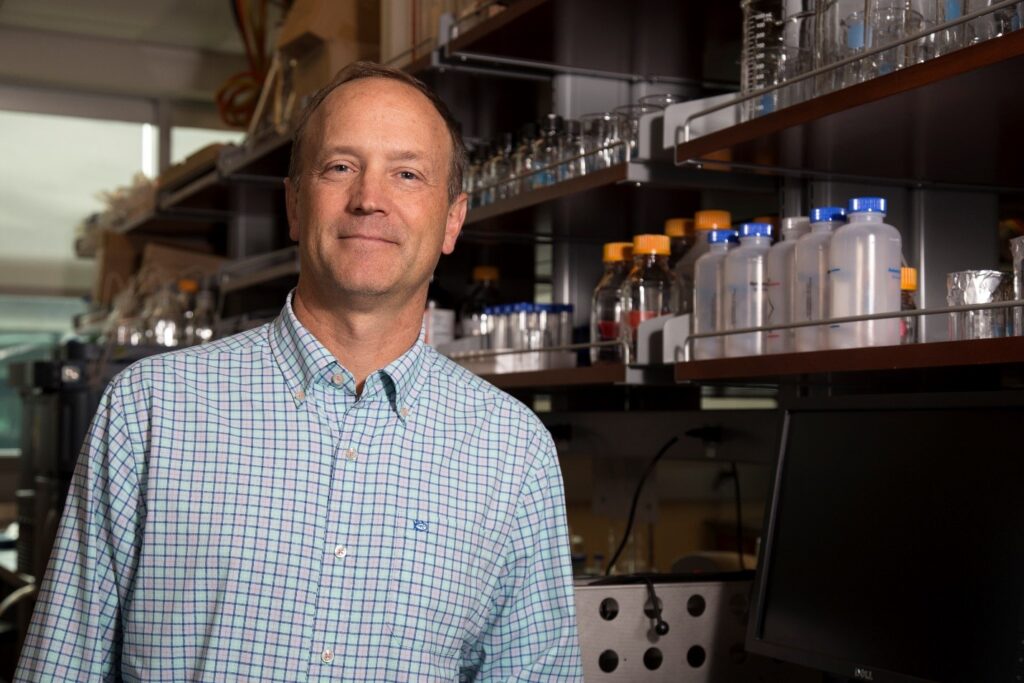 On University at Albany Week: We still need to find a cure for many afflictions.
On University at Albany Week: We still need to find a cure for many afflictions.
Andrew Berglund, director of the RNA Institute and professor of biological sciences, details one of these.
Dr. Berglund’s scientific career has revolved around understanding the role of RNA in biology. The focus of his research is on neuromuscular diseases with the goal of translating basic science into therapeutic strategies using a combination of biochemical, cellular, genomic and computational approaches. He is particularly interested in understanding the mechanisms of a common form of muscular dystrophy, myotonic dystrophy, with several personal connections to this devastating disease.
The Fight Against Myotonic Dystrophy
Myotonic dystrophy is the most common form of adult-onset muscular dystrophy, impacting about 1 in 2,100 New Yorkers. The disease affects muscle tissue as well as the heart, eyes and brain. Patients can experience lethargy, cataracts and glucose intolerance. Vision, speech, digestion and cognitive function are often impaired. The disease can affect people at any life stage, starting at birth.
At the RNA Institute, we are working to create a hub of research, training and education to raise awareness of myotonic dystrophy, help medical practitioners better detect its symptoms, and advance research towards treatments.
We know that myotonic dystrophy is caused by a type of genetic mutation called a “repeat expansion” — which is also responsible for diseases like Huntington Disease and ALS.
A “repeat” is when a small section of the genetic code occurs multiple times in a row in our DNA. Repeats are common, but typically occur no more than 20 to 30 times in one region and they don’t frequently change size. In people affected by a repeat expansion disease, this repeat grows and expands — up to tens of thousands of times at the same region of the genome — disrupting important processes in the cell.
A byproduct of repeat expansion is something we call “toxic RNA” — which affects proteins and prevents them from performing critical functions throughout the body.
As we work towards finding effective treatments and ultimately a cure, we are currently exploring a technique called “RNA rescue”. This involves creating and testing different chemical compounds that target toxic RNA in order to reduce the effects of repeat expansion.
Our ultimate goal is to develop a drug that can be delivered through an oral tablet and reach all organs in the body including the heart, muscles and brain — heading off repeat expansion and stopping symptoms.
